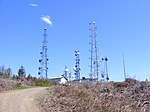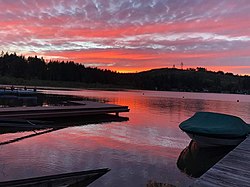KZTM
1966 establishments in Washington (state)Centralia, WashingtonHD Radio stationsRadio stations established in 1966Radio stations in Seattle ... and 1 more
Regional Mexican radio stations in the United States
KZTM (102.9 FM) is a Regional Mexican radio station serving the Tacoma and Olympia, Washington area. Owned and operated by Bustos Media, through licensee Bustos Media Holdings, LLC, the station is licensed to McKenna, Washington. The transmitter site is in Capitol State Forest near Olympia, while its studios are located in Kent.
Excerpt from the Wikipedia article KZTM (License: CC BY-SA 3.0, Authors).KZTM
Capitol Peak,
Geographical coordinates (GPS) Address Nearby Places Show on map
Geographical coordinates (GPS)
| Latitude | Longitude |
|---|---|
| N 46.975277777778 ° | E -123.13777777778 ° |
Address
Capitol Peak
Capitol Peak
Washington, United States
Open on Google Maps



